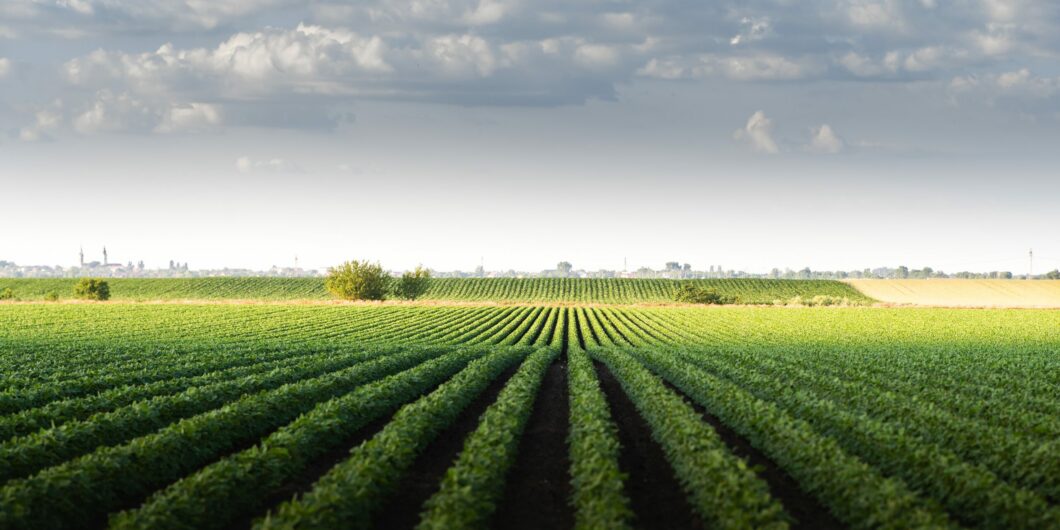Eugene McCarraher's Enchantments of Mammon seeks to unveil capitalism and recapture a premodern sense of the world as sacramental.
Hating the Heartland
In The Lies of the Land, Steven Conn has undertaken to write a corrective—a revisionist history that dismantles certain mythologies over the role, influence, and nature of rural America. Unfortunately, in his eagerness to describe rural America as little more than an artifact of four forces (militarization, industrialization, suburbanization, and corporatization), he ends up simplifying rural America into a tawdry two-dimensional caricature. He sets out to describe “the collapse of the Jeffersonian myth of the yeoman farmer” and instead reveals his own disaffection with those selfsame Jeffersonian ideals.
The book is a palpable and oh-so-au courant historian’s gambit to engage in an activist history, with its predictable slings and arrows at “Capitalism” writ large. “Rural people,” he says, “continue to promote the very forces that led to their demise: free enterprise and capitalism.” Ah, well there you have it. At least Conn isn’t shy about his political leanings: he feels the 2016 election was a “vertiginous and surreal fever dream … with a result as unthinkable as it was unlikely.” Trump’s win exposed for Conn a fundamental urban-rural divide that spurred him (egged on by his baffled leftist colleagues) into conducting a post-mortem of this “unlikely” election. He wrote the book to try to understand why it was that “rural America took its revenge on the rest of us for having been ignored, or left behind, or otherwise insulted.”
Conn’s overarching premise is that “far from being some differently paced alternative to the national mainstream, rural America is a pure product of this country.” Whatever that means. It’s hard to say if this is intended to be a profound insight or a self-evident truism, but Conn’s professed ambition, meanwhile, is to describe rural America with such fresh historical insight that, “by seeing [rural] spaces more clearly, we can have more productive conversations about the future of rural America.” While the ambition is commendable, and a fair handful of useful tidbits may be gleaned from the project, the work as a whole remains distinctly unconvincing, most glaringly because it so patently seeks to grind out a basic rural/urban distinction that “the rest of us” are intuitively and keenly aware of.
The Fantasy
Conn believes that “Americans … project onto rural America their yearning for tight-knit community, for self-reliance and independence, neighborliness, and simpler, slower living; but that fantasy cannot accommodate the realities of life in many parts of rural America, nor does it take into account the thorough extent to which the military, industry, corporations, and suburbia have shaped rural space.” He’s correct, of course, that Americans project a basket of fantasy values onto rural America. And he’s right to point out that modern rural America isn’t exactly a Rockwell painting. But here’s the thing: while Liberal Kansas may indeed be influenced by major industrial and corporate forces (National Beef draws massive immigrant labor to staff its mechanized operations, for example) it is still a distinctively rural community. It embodies much of what America fantasizes about rural communities: it is keenly attuned to the goings-on at its local high school, and it is still composed of independent-minded, self-reliant bubbas who can fix a fuel pump and gals who can rope a calf. It still comes together as a community of neighbors to help in a crisis, and still lives, yes, a simpler and slower lifestyle. Rural America’s failure to live up to its idealized projections, in other words, doesn’t mean those ideals are void.
Much of Conn’s unvarnished criticism is worth digesting, however. Rural America is clearly a far cry from the patchwork of quaint family farms it once was. “To call 1,500 acres of corn, genetically modified to withstand harsh chemical pesticides and intended for a high-fructose corn syrup factory, a ‘farm’ is a bit like calling a highly automated GM factory a ‘workshop,’” Conn acerbically notes. True enough. Conn’s treatment of the corporatization of rural America is a useful insight into a generally underappreciated aspect of modern rural life.
Conn’s argument is weaker when discussing the “militarization” of rural space. He is “hard pressed to think of another democracy that fetishizes the military to such an extent.” Yes, America does do that, and the fetishizing is especially strong in rural areas. Yes, substantial acreage is (or was) owned by the Department of Defense (DoD), and there are many a vestigial remnant as a result. But how that distinctly defines rural America is not made clear: Conn does not lay out metrics to make a convincing case or explain a counterfactual example that might suggest how remarkably different rural America would be without its military connections. The DoD, by way of perspective, is only the fifth largest federal landowner, with control over around 26.1 million acres. The Bureau of Land Management and US Forest Service, by contrast, control 440.3 million acres, some seventeen times more land area than the DoD. Not only this, but they arguably wield a far more direct impact on local agriculture and land use, especially in the West. My own sense is that rural America would be effectively identical in its essential character even if DoD investments were confined entirely to, say, the deep-water ports of the eastern and western seaboard. Conn doesn’t get into this kind of analysis—he merely asserts a tenuous claim about the impact of militarization on the character of rural America—mostly, it feels, because he despises them equally.
Conn is on surer (or at least more interesting) ground in his treatment of federal policy interventions in rural life. From the “Country Life” Commission under Teddy Roosevelt to the massive market distortions under the Agricultural Adjustment Administration of FDR, to Eisenhower’s Rural Development initiatives to support small family farms, the federal government has spent inordinate resources attempting to prop-up various ideals of a romanticized rural America. All of them have failed to one extent or another, being “primarily urban phenomena,” as Conn calls them—channeling impossible American dreams of country living through urban bureaucracies. Rexford Tugwell called Franklin Roosevelt a “child of the country” and a “country squire in the White House,” who “simply cared more about the fate of rural communities than he did about cities.” All his sympathies, however, did not prevent him from permanently accelerating the rural-to-urban exodus. A venerable friend of mine here in northwest Missouri remembers the time that FDR’s mandate to butcher baby hogs (ostensibly to prop up the price of pork) caused his mother deep anguish and forced his family to move into town, never to return to the family farm.
In other federal interventions, Conn’s examination of the US Corps of Engineers is a useful précis for those interested in the burgeoning mess of water management nationwide. While he cannot resist presentist editorializing of Corps efforts as “arrogant,” he does spend the time laying out its convoluted track record. “The first half of its history might be described as helping get water to flow more beneficially, the second half trying to stop it” is a neat summary of an institution that has truly altered the face of the nation and rural America in particular.
A positive, proactive vision of a rural future may, in fact, be the very same “collapsed” Jeffersonian vision of an independent yeomanry that Conn critiques so vigorously.
Anti-Capital
Though he doesn’t come right out and say it, Conn clearly wants to skewer the sacred cow of the American Rustic in pursuit of larger game—Big Capital or the free market more generally. Conn repeatedly betrays a predictable lefty-historian’s anti-capitalist streak: using “land grab” to describe voluntary sales, claiming that capital “often bought up the state and local politicians,” or that “almost as an afterthought, Capital paid for the workers … as exploited a class of workers as Karl Marx ever imagined.” He trots out the tired fabricated Upton Sinclair clichés about slaughterhouses with “satanic dark interiors,” that “brutalize their workers” while paying them “pittance wages,” and so on. He doesn’t, in short, have much faith in the ability of free peoples to freely transact—all are instead victims, trapped in the pernicious thrall of a cabal of corporate cutthroats. He doesn’t imagine that people are free to make comparatively better choices for themselves at the margins, and that these choices have enormous positive cumulative effects.
He believes, for example, that after World War I, “farmers became, or were forced to become, businessmen.” Those who “failed to follow the rules of capitalism therefore went out of business.” But this ridiculous rendering trivializes the extraordinary degree to which farmers from time immemorial have been integrated into markets and engaged in sophisticated business practices. The very word “capital,” for instance, is derived from “head”—as in “head” of livestock. Adam Smith spent far more time in his 1776 Wealth of Nations describing the market behaviors of cattlemen and farmers than of nation-states. In short, farmers have always been businessmen—those who are not are either semi-starved subsistence die-hards or hobbyists.
The New Yorker magazine (which wrote an elegant, if predictably sympathetic, review of Conn’s book), shares Conn’s disaffection with the dynamism of the marketplace. It laments the corporatization of small-town America, noting the dramatic shifts in labor force and retail choices that confront rural Americans today:
As jobs rush out, discount retail chains swoop in—notably Dollar General, which has more than four times as many stores in the US as Walmart. Although its former chief executive, Cal Turner Jr. has written a book about Dollar General’s “small-town values,” the corporation essentially preys on distressed rural communities. It pursues profits by minimizing staff and pay, and by shutting its stores whenever they stop making money.
“Essentially preys” is also a way to say Dollar General does not prey on its customers—instead it offers competitively priced things rural people want in places they don’t have to drive hours to get to. I share Conn’s and the New Yorker’s tender aesthetic sensibilities and would frankly prefer the quant little brick mercantile that replaced our steamboat docks two centuries ago, but I don’t get to make that decision for people. And so I go to Dollar General—our local outlet is run by a guy named Clint, who knows the kids’ names and who fills the same role as his shopkeeper forebears. Beyond the ugly façade, I really have a hard time justifying the antipathy toward Dollar General. Conn’s critique of rural America’s sellout of its values, in short, rings hollow. Moreover, Conn’s and the New Yorker’s brand of sneering embodies precisely the elitism that powers the rural angst Conn professes to want to understand.
Tautologies
For all the talk of things “rural,” Conn is intentionally diffident about what, exactly, the word means in the first place. He plays a bit of a bait-and-switch, never actually defining it, concluding somewhat coyly that “you know it when you see it.” “We can conclude,” he notes rather blandly at one point, “that the less dense a place, the less urban it will be.” Yes, less dense indeed. There may, in fact, have been a useful kernel of discussion here (comparing population densities between Europe and America for instance, and its effects on political culture) but since he never fully engages, this conclusion comes across as yet another in a series of irritating tautologies.
Conn writes, “What many aggrieved rural people seem to want are the benefits of urban society without the density and diversity of urban living. In this sense, rural is reduced to what the city is not.” He quotes David Foster Wallace who writes of rural folk that “live by unpopulated land, marooned in a space whose emptiness is both physical and spiritual. You live in the same factory you work in. You spend an enormous amount of time with the land, but you’re still alienated from it in some way.” Well, this isn’t true of any of the rural people I know. We have our faults and our existential anxieties like anyone else, but alienation isn’t high on our grievance list. Rather, these sorts of simplifications are diagnoses by urbanites, town-mice who cannot fathom why anyone in their right mind would not want to live cheek-by-jowl with their fashionable neighbors. We, meanwhile, cannot fathom why anyone would want to live where you cannot “pee off your porch at high noon,” to quote a wise rural philosopher.
In the end, Conn believes that “without a positive, proactive vision of what a rural future might be, some number of Americans who live in ostensibly rural places marinate in a sense of loss and perpetual disappointment.” I’m not at all convinced of this. A positive, proactive vision of a rural future may, in fact, be the very same “collapsed” Jeffersonian vision of an independent yeomanry that Conn critiques so vigorously. Simply because he doesn’t share this ideal, or because it has fitfully failed to live up to its vaunted potential, doesn’t mean it isn’t rooted, alive and well, outside of city limits.



